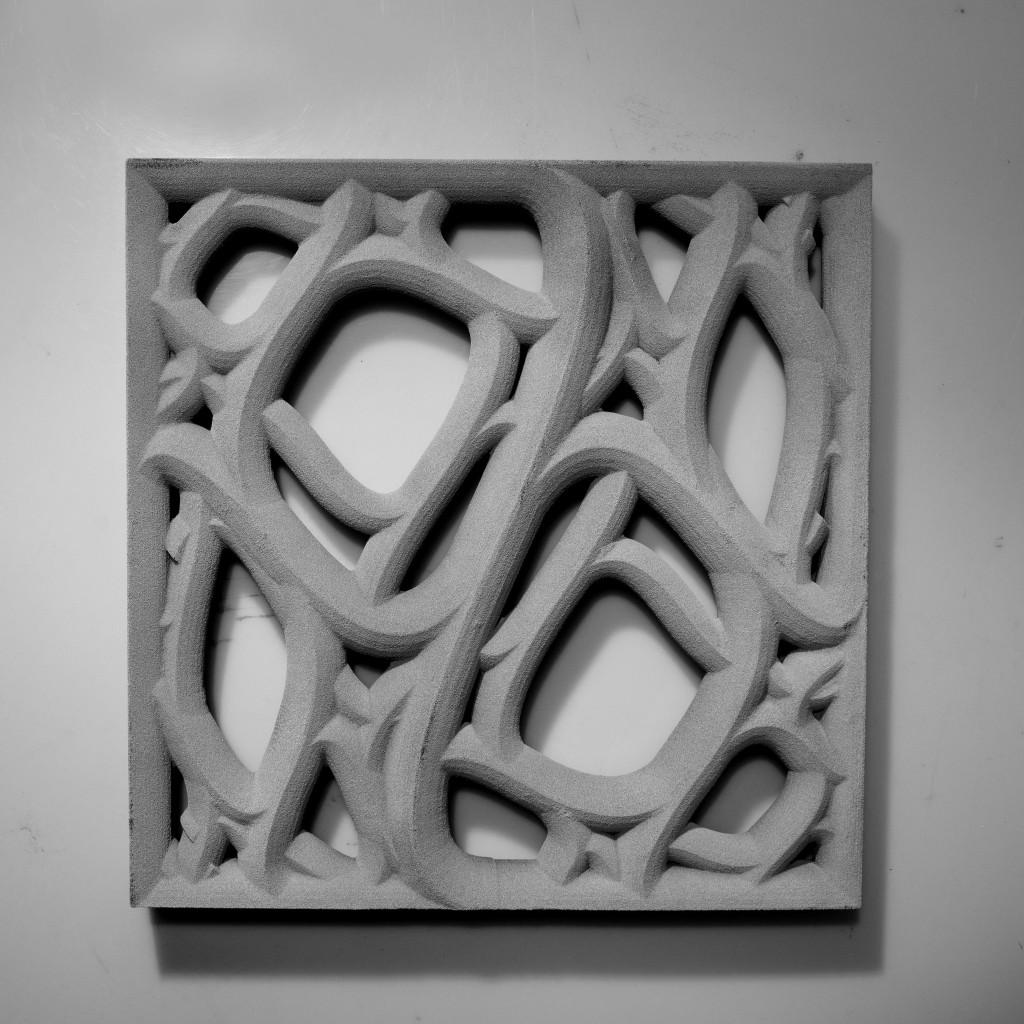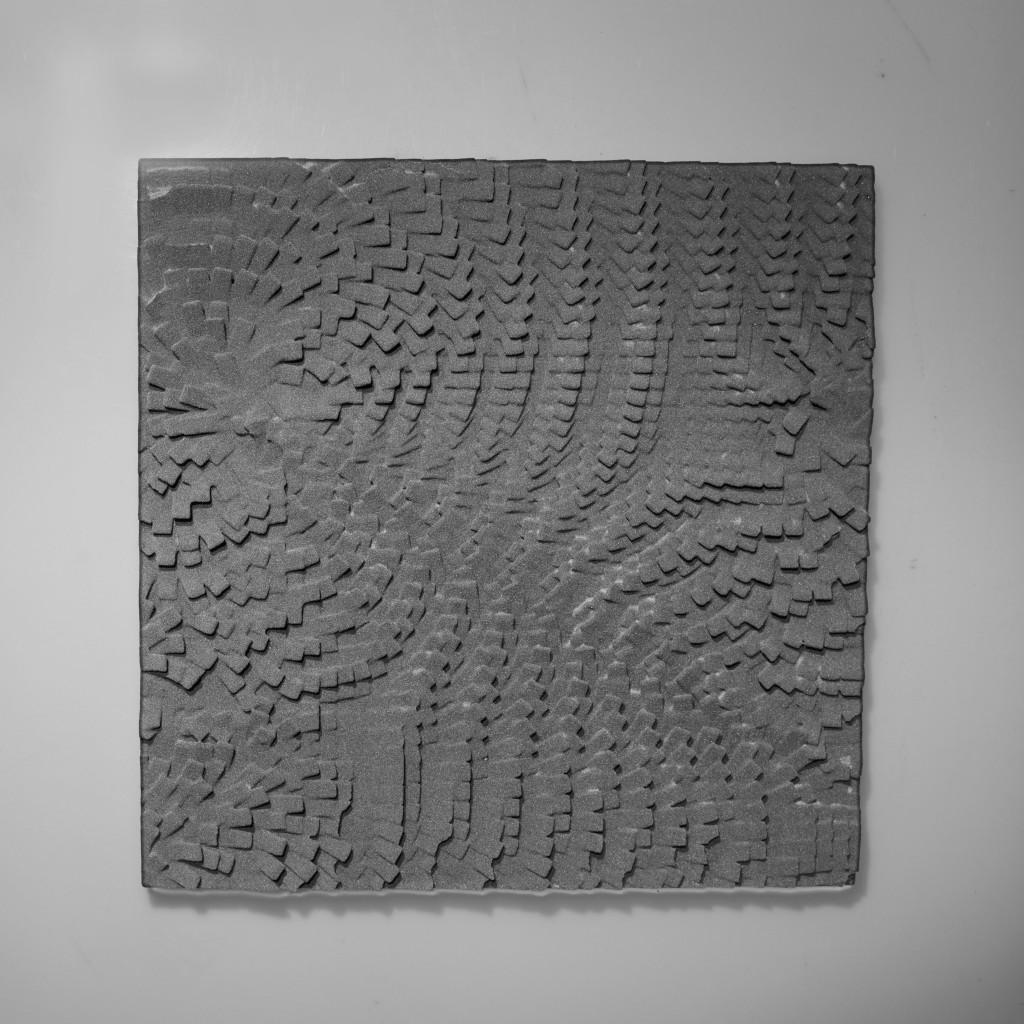Sandstone has been used in construction since ancient times. Until now, if you wanted an impressive structure created from sandstone you only had two approaches to choose between: (slow option) skilled craftsmen spending months painstakingly carving the necessary pieces or (the slower option) a wait of millennia while nature wears natural sandstone deposits into magical shapes like those found in Lower Antelope Canyon.
 Masters of Architecture students at the University of Toronto enrolled in a thesis preparation studio under the supervision of Benjamin Dillenburger worked together on a new (much faster) option: 3D printed sandstone tiles. The project, entitled Future Bricks: Digital Stereotomy, was exhibited at the Eric Arthur Gallery in April and the rather dry name belies the beauty of the forms that were created.
Masters of Architecture students at the University of Toronto enrolled in a thesis preparation studio under the supervision of Benjamin Dillenburger worked together on a new (much faster) option: 3D printed sandstone tiles. The project, entitled Future Bricks: Digital Stereotomy, was exhibited at the Eric Arthur Gallery in April and the rather dry name belies the beauty of the forms that were created.
The driving idea behind the coursework was to challenge existing notions of possibilities present in prefabrication. The structural capacity for 3D printed sandstone is very similar to that of natural sandstone, but the potential for the modification of the form is greatly expanded by 3D printing techniques. The two prohibitive factors present in the use of sandstone for formal experimentation have been time and cost, both of which are handily addressed through the process developed in this project.
 The creation of these new forms required the development of new computational design methods; an updated version of traditional stereotomy. Stereotomy is the set of geometrical knowledge and techniques of drawing and cutting the blocks of stone and their assembly into complex structures. (Alternately, Stereotomy is also the ninth studio album released by the Alan Parsons Project, but that’s neither here nor there.)
The creation of these new forms required the development of new computational design methods; an updated version of traditional stereotomy. Stereotomy is the set of geometrical knowledge and techniques of drawing and cutting the blocks of stone and their assembly into complex structures. (Alternately, Stereotomy is also the ninth studio album released by the Alan Parsons Project, but that’s neither here nor there.)
The students described their project in an invitation to their thesis show:
“We investigated the potential and limitations of 3D san printing for architecture with a focus on structure, topology, resolution and ornamentation. We speculated about the impact of this fabrication method based on the reciprocal relationship between parts and whole and between surface and volume in architectural constructions.”
 Written like true architects, if you can push your way past the language, you will find some truly beautiful 3D printed tiles. A combination of organic and geometric forms ranging from complex surface articulations to simple tracery-like tendrils, these tiles significantly increase the possibilities for the creation of awe inspiring spaces using a building material that humans have used since time immemorial. They are reminiscent of the forms created over millennia by natural forces and I can’t help but wonder what Gaudi’s work would have been like had he had access to this possibility.
Written like true architects, if you can push your way past the language, you will find some truly beautiful 3D printed tiles. A combination of organic and geometric forms ranging from complex surface articulations to simple tracery-like tendrils, these tiles significantly increase the possibilities for the creation of awe inspiring spaces using a building material that humans have used since time immemorial. They are reminiscent of the forms created over millennia by natural forces and I can’t help but wonder what Gaudi’s work would have been like had he had access to this possibility.
I would very much like to see an exploration of the quality of the material be more highly developed. Currently, the form is well explored, but the color and materiality leaves something to be desired. One of the striking aspects of sandstone is the limpid colors that flow through it, creating dancing patterns on its surface. I would also very much like to see an assembly of these tiles as one in isolation is such a different experience than a multitude.
These are some bright students with an impressive eye and quick wit. I look forward to seeing how they bring these ideas forward into their architectural practices.
Let us know what you think of these tiles and this technique in the 3D Printed Sandstone Tiles forum thread at 3DPB.com.
Subscribe to Our Email Newsletter
Stay up-to-date on all the latest news from the 3D printing industry and receive information and offers from third party vendors.
You May Also Like
Precision at the Microscale: UK Researchers Advance Medical Devices with BMF’s 3D Printing Tech
University of Nottingham researchers are using Boston Micro Fabrication‘s (BMF) 3D printing technology to develop medical devices that improve compatibility with human tissue. Funded by a UK grant, this project...
3D Printing Webinar and Event Roundup: April 21, 2024
It’s another busy week of webinars and events, starting with Hannover Messe in Germany and continuing with Metalcasting Congress, Chinaplas, TechBlick’s Innovation Festival, and more. Stratasys continues its advanced training...
3D Printing Webinar and Event Roundup: March 17, 2024
It’s another busy week of webinars and events, including SALMED 2024 and AM Forum in Berlin. Stratasys continues its in-person training and is offering two webinars, ASTM is holding a...
3D Printed Micro Antenna is 15% Smaller and 6X Lighter
Horizon Microtechnologies has achieved success in creating a high-frequency D-Band horn antenna through micro 3D printing. However, this achievement did not rely solely on 3D printing; it involved a combination...






























